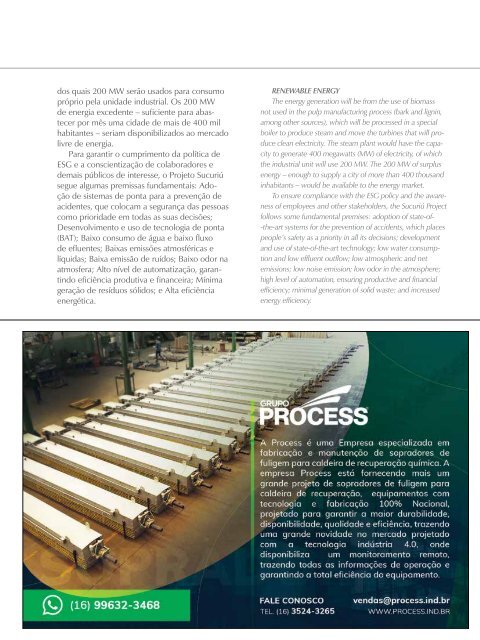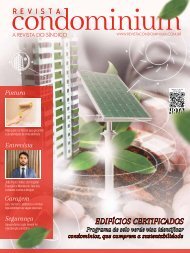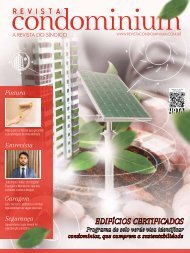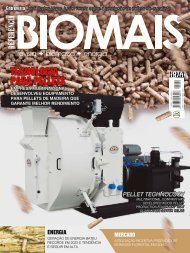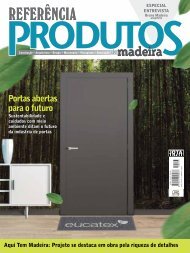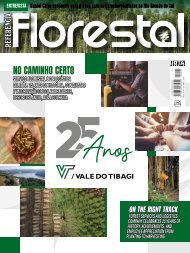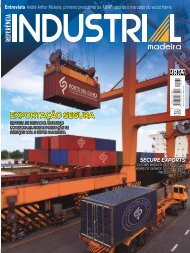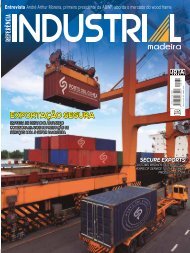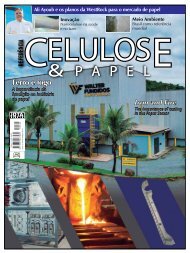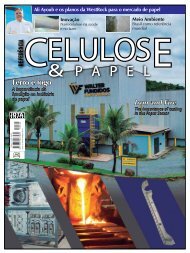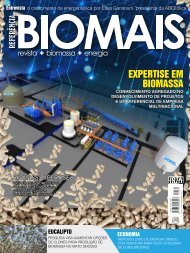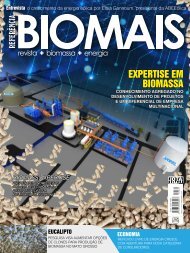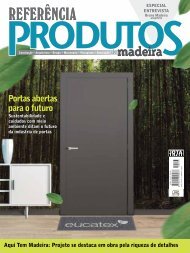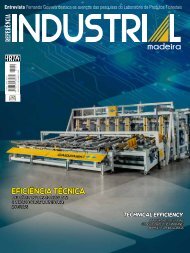Celulose_56Web
Create successful ePaper yourself
Turn your PDF publications into a flip-book with our unique Google optimized e-Paper software.
dos quais 200 MW serão usados para consumo<br />
próprio pela unidade industrial. Os 200 MW<br />
de energia excedente – suficiente para abastecer<br />
por mês uma cidade de mais de 400 mil<br />
habitantes – seriam disponibilizados ao mercado<br />
livre de energia.<br />
Para garantir o cumprimento da política de<br />
ESG e a conscientização de colaboradores e<br />
demais públicos de interesse, o Projeto Sucuriú<br />
segue algumas premissas fundamentais: Adoção<br />
de sistemas de ponta para a prevenção de<br />
acidentes, que colocam a segurança das pessoas<br />
como prioridade em todas as suas decisões;<br />
Desenvolvimento e uso de tecnologia de ponta<br />
(BAT); Baixo consumo de água e baixo fluxo<br />
de efluentes; Baixas emissões atmosféricas e<br />
líquidas; Baixa emissão de ruídos; Baixo odor na<br />
atmosfera; Alto nível de automatização, garantindo<br />
eficiência produtiva e financeira; Mínima<br />
geração de resíduos sólidos; e Alta eficiência<br />
energética.<br />
RENEWABLE ENERGY<br />
The energy generation will be from the use of biomass<br />
not used in the pulp manufacturing process (bark and lignin,<br />
among other sources), which will be processed in a special<br />
boiler to produce steam and move the turbines that will produce<br />
clean electricity. The steam plant would have the capacity<br />
to generate 400 megawatts (MW) of electricity, of which<br />
the industrial unit will use 200 MW. The 200 MW of surplus<br />
energy – enough to supply a city of more than 400 thousand<br />
inhabitants – would be available to the energy market.<br />
To ensure compliance with the ESG policy and the awareness<br />
of employees and other stakeholders, the Sucuriú Project<br />
follows some fundamental premises: adoption of state-of-<br />
-the-art systems for the prevention of accidents, which places<br />
people’s safety as a priority in all its decisions; development<br />
and use of state-of-the-art technology; low water consumption<br />
and low effluent outflow; low atmospheric and net<br />
emissions; low noise emission; low odor in the atmosphere;<br />
high level of automation, ensuring productive and financial<br />
efficiency; minimal generation of solid waste; and increased<br />
energy efficiency.


